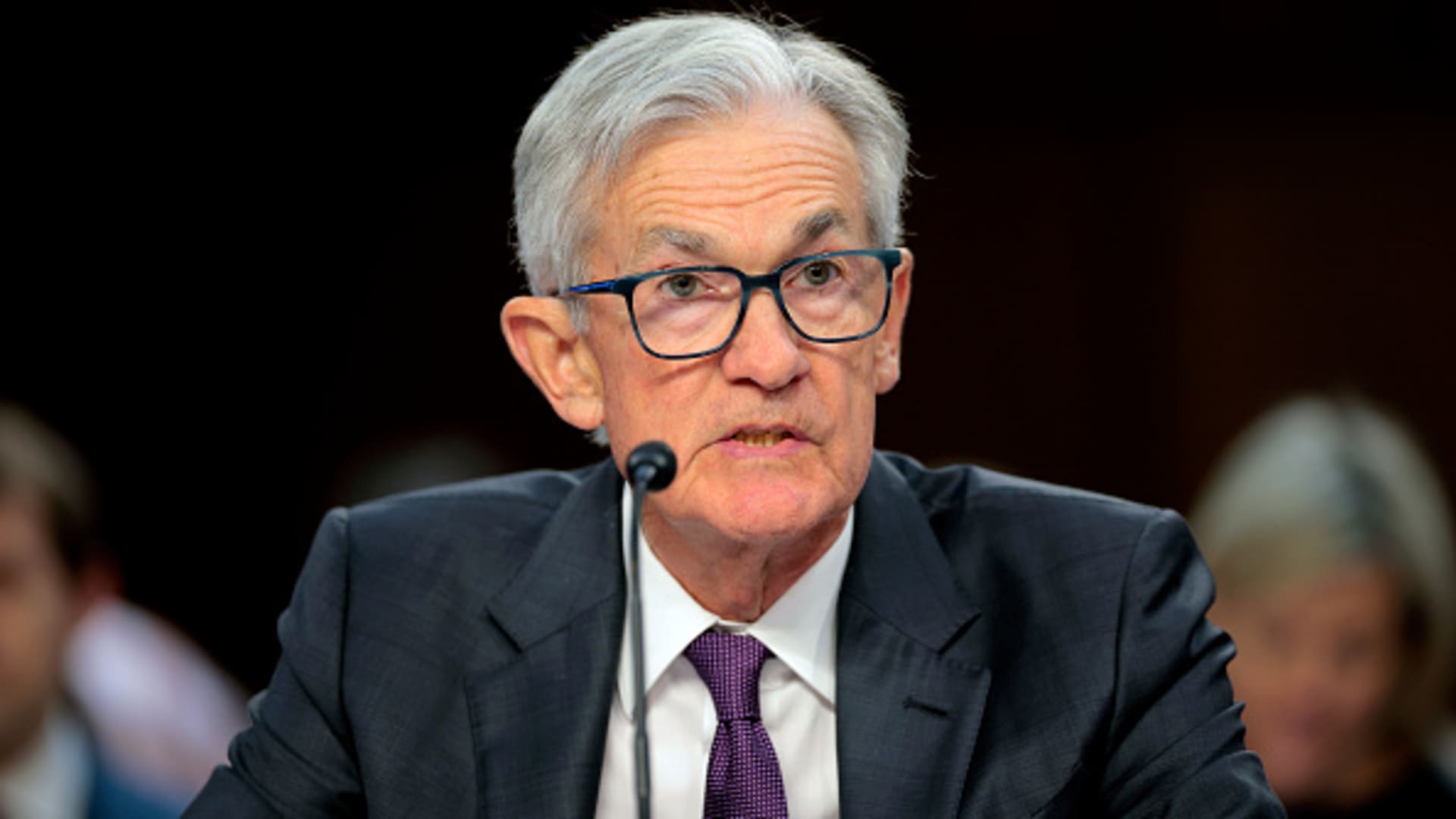Federal Reserve Chair Jerome Powell testifies before the Senate Banking Committee in the Hart Senate Office Building on Capitol Hill on February 11, 2025 in Washington, DC.
Chip Somodevilla | Getty Images News | Getty Images
Respondents to the March CNBC Fed Survey have raised the risk of recession to the highest level in six months, cut their growth forecast for 2025 and raised their inflation outlook.
Much of the change appears to stem from concern over fiscal policies from the Trump administration, especially tariffs, which are now seen by them as the top threat to the US economy, replacing inflation. The outlook for the S&P 500 declined for the first time since September.
The 32 survey respondents, who include fund managers, strategists and analysts, raised the probability of recession to 36% from 23% in January. The January number had dropped to a three-year low and looked to have reflected initial optimism following the election of President Trump. But like many consumer and business surveys, the recession probability now shows considerable concern about the outlook.
“We’ve had an abundance of discussions with investors who are increasingly concerned the Trump agenda has gone off the rails due to trade policy,” said Barry Knapp of Ironsides Macroeconomics. “Consequently, the economic risks of something more insidious than a soft patch are growing.”
“The degree of policy volatility is unprecedented,” said John Donaldson, director of fixed income at Haverford Trust.
The average GDP forecast for 2025 declined to 1.7% from 2.4%, a sharp markdown that ended consecutive increases in the three prior surveys dating back to September. GDP is forecast to bounced back to 2.1% in 2026, in line with prior forecasts.
“The risks to consumers’ spending are skewed to the downside,” said Neil Dutta, head of economic research at Renaissance Macro Research. “Alongside a frozen housing market and less spending across state and local governments, there is meaningful downside to current estimates of 2025 GDP.”
Fed rate cut outlook
Most continue to believe the Fed will cut rates at least twice and won’t hike rates, even if faced with persistently higher prices and weaker growth. Three-quarters forecast two or more quarter-point cuts this year. Part of the reason is that two-thirds believe that tariffs will result in one-time price hikes rather than a broader outbreak of inflation. But the policy uncertainty has created a wider range of views on the Fed than normal with 19% believing the Fed won’t cut at all.
Still, higher tariffs and weaker growth are a dilemma for the Fed.
“Powell is really stuck here because of the tariff overhang,” said Peter Boockvar, chief investment officer, Bleakley Financial Group. “If he gets more worried about growth because of them and cuts rates as unemployment rises but then Trump removes all the tariffs, he’s jumped the gun.”
More than 70% of respondents believe tariffs are bad for inflation, jobs and growth. 34% say tariffs will decrease US manufacturing with 22% saying they will result in no change. Thirty-seven percent of respondents believe tariffs will end up in greater manufacturing output. More than 70% believe the DOGE effort to reduce government employment is bad for growth and jobs but will be modestly deflationary.
“A global trade war, haphazard DOGE cuts to government jobs and funding, aggressive immigrant deportations, and dysfunction in DC threaten to push what was an exceptionally performing economy into recession,” said Mark Zandi, chief economist, Moody’s Analytics.

 Blog Post1 week ago
Blog Post1 week ago
 Economics1 week ago
Economics1 week ago
 Finance1 week ago
Finance1 week ago
 Economics1 week ago
Economics1 week ago
 Economics1 week ago
Economics1 week ago
 Personal Finance1 week ago
Personal Finance1 week ago
 Accounting1 week ago
Accounting1 week ago
 Economics1 week ago
Economics1 week ago









